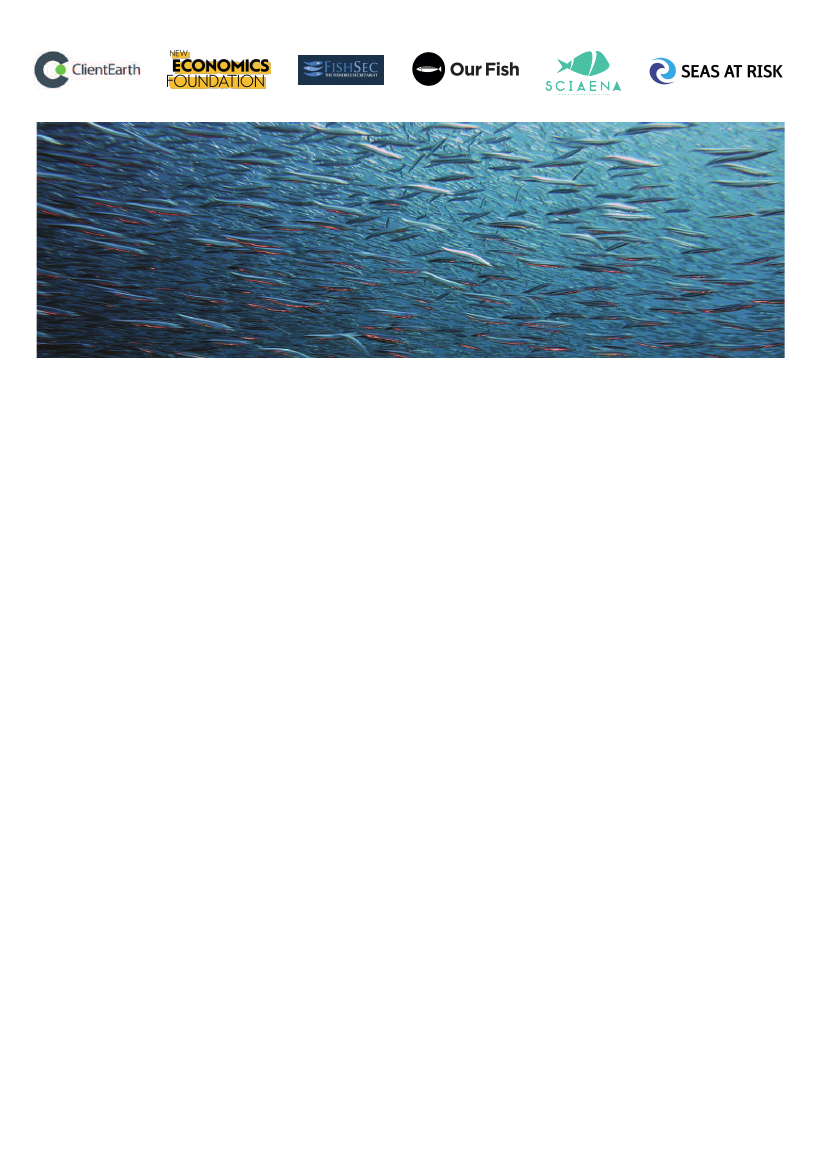
STUDY SUMMARY
5
It’s there for a reason:
Why Ministers must not exceed scientific
advice on fishing quota
Gri n Carpenter
Summary
New Economics Foundation
On December 16 and 17, EU fisheries ministers will set fishing quotas for the North Sea and Northeast Atlantic. This
meeting will largely determine whether the reform of the EU’s Common Fisheries Policy will succeed or fail in the
objective to end overfishing in EU waters.
While EU Ministers have put o action to end overfishing by 2020, there are countless positive reasons why reaching
the deadline should be embraced. The briefing
It’s
there for a reason: Why Ministers must not exceed
scientific advice on fishing quota
explains that ending overfishing brings environmental, social, and economic
benefits. And it is also the law. This document summarises the briefing’s arguments.
Environmental benefits: Abundant marine life in a more resilient ecosystem
For most EU commercial fish stocks, fishing pressure is managed through quota limits – a maximum quantity of fish that
can be caught. Research has demonstrated that if and when fishing quotas are set in accordance with scientific advice,
stock recovery follows.
There is a growing recognition that it is di cult to manage fish populations separately and instead a multispecies or
‘ecosystem-based approach’ should be employed. Studies using this approach show that for some populations to be
caught at their maximum yield, others must be caught below their maximum yield – meaning quotas set below the
scientific advice.
Fishing is not the only stressor in marine ecosystems. Increasingly, climate change is being cited as a major stressor as
fish populations shift poleward. Ending overfishing can help mitigate this problem by building resilience through larger
and more abundant marine life.
Rebuilding fish populations would end the ‘boom and bust’ of current management. With many fish populations still in a
fragile state of recovery, fishing at the limit of scientific advice can risk overfishing. This has led to the recent MSC
certification and subsequent removal for North Sea cod.
Socio-economic benefits: Larger catches from fewer trips
Often policies to protect the environment are contrasted with their financial costs. This is not the case for overexploited
renewable resources. Allowing fish populations to recover increases the abundance and thus a sustainable level of harvest
comes from a larger base (for example 10% of 100,000 tonnes instead of 20% from 20,000 tonnes). By protecting fish
populations, we can fish more in the future with more income for fishers and coastal communities.
1